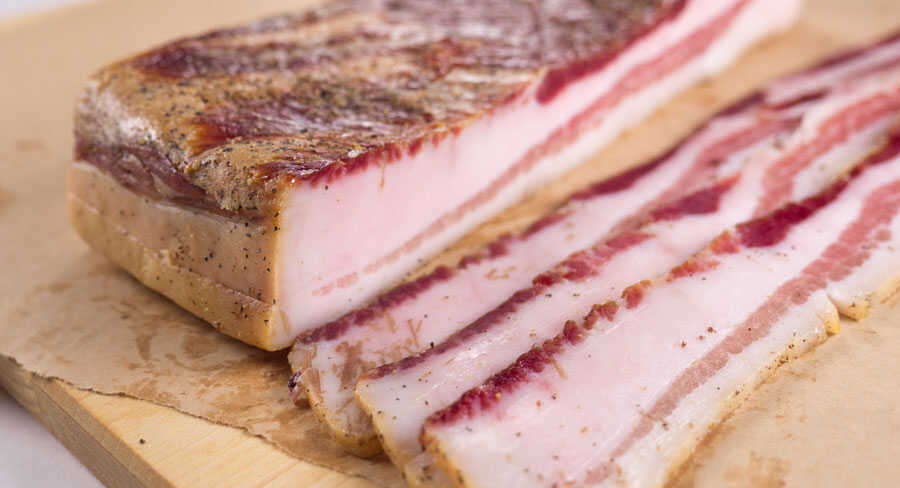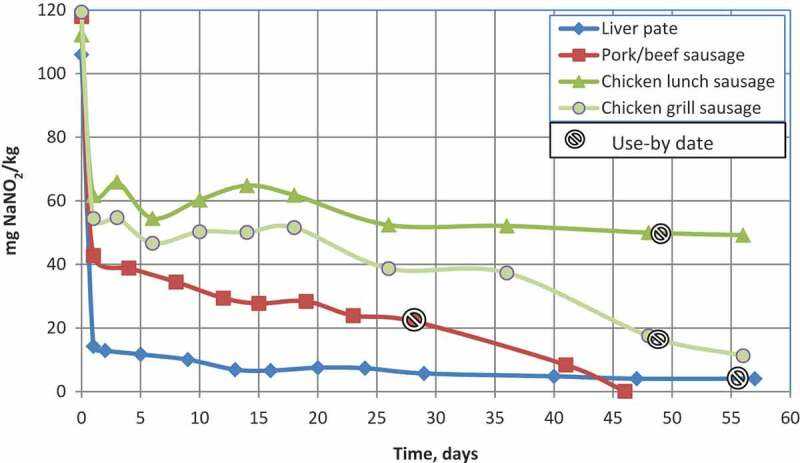
A relação entre nitrito, nitrato e câncer tem sido objeto de estudos e debates na comunidade científica e de saúde. Nitrito (NO2-) e nitrato (NO3-) são compostos químicos que podem ser encontrados naturalmente em diversos alimentos, principalmente vegetais. Também são incluídos em produtos processados, como carnes curadas.


Potencial Cancerígeno: em situações específicas, o consumo excessivo de nitrito e nitrato pode levar à formação de compostos chamados nitrosaminas, que têm sido associados a um aumento do risco de câncer. As nitrosaminas são conhecidas por serem carcinogênicas em estudos com animais e, em alguns casos, foram associadas ao câncer em seres humanos.
Alimentos Processados: nitrito e nitrato são frequentemente adicionados a produtos processados, como salsichas, presuntos e bacon, para realçar a cor, prolongar a vida útil e inibir o crescimento de bactérias prejudiciais. Quando esses produtos são cozidos em altas temperaturas, como grelhar ou defumar, as nitrosaminas podem se formar, potencialmente aumentando o risco.
Regulamentação: muitos países têm regulamentações estritas sobre a quantidade de nitrito e nitrato segura permitida em alimentos processados, bem como regras para seu uso seguro. Leia mais sobre o que é e como usar o sal de cura nos produtos processados.
Fontes Naturais: é importante observar que o nitrato(que é convertido em nitrito pela saliva) também está presente, e em quantidades muitas vezes maiores do que nos embutidos, em muitos alimentos de origem vegetal, como folhas verdes, beterraba, aipo, cenoura e muitos outros.
Para quem produz, quais recomendações seguir?
Adicione o mínimo necessário para proteger e agregar as qualidades de cor e sabor conferidas pelo nitrito. Leia as explicações detalhadas e sugestões de quantidade do post Sal de cura o que é e quanto usar. Além disso, use um antioxidante em conjunto com o sal de cura. O antioxidante acelera a conversão do nitrito, reduzindo o residual no produto final.
Para quem consome, quais recomendações seguir?
Uma vez que as nitrosaminas são geradas pelo calor, não aqueça excessivamente os produtos ao assar ou grelhas. No caso de um embutido fresco, como linguiças para churrasco, tenha sido produzido muito recentemente, no mesmo dia ou dia anterior, mantenha o produto fresco na geladeira por mais alguns dias. Como é possível ver no gráfico abaixo, o nitrito em contato com a carne é convertido e desaparece do produto, após 24 h da adição do nitrito, contando do momento de sua produção, os níveis de nitrito foram reduzidos em, aproximadamente, 55%, 45%, 35% e 15% do nível inicial, ou seja, houve uma queda de até 85% em 24 horas.
Para mais detalhes sobre o estudo do gráfico acima, leia o post Tempo de conversão do nitrito nas carnes curadas
Equilíbrio e Moderação: o consumo equilibrado e moderado de alimentos que contenham nitrito e nitrato, especialmente quando eles são parte de uma dieta equilibrada rica em frutas, vegetais e outros alimentos saudáveis, pode não representar um risco significativo para a saúde. É importante manter uma dieta variada e não se basear exclusivamente em alimentos processados.
Redução de Riscos: alguns métodos de preparação de alimentos, como adicionar antioxidantes podem ajudar a reduzir a formação de nitrosaminas em produtos processados.
Em resumo, embora nitrito e nitrato possam estar associados a um risco aumentado de câncer em determinadas condições, o contexto da dieta geral, a quantidade consumida e os métodos de preparação dos alimentos desempenham um papel importante. Manter uma dieta equilibrada, rica em alimentos naturais e minimizar o consumo de produtos processados é uma abordagem prudente para reduzir qualquer potencial risco à saúde relacionado a esses compostos. Além disso, é sempre importante seguir as regulamentações de segurança alimentar em seu país. Consultar um profissional de saúde ou nutricionista pode ser útil para orientação personalizada.





Olá, agora fiquei com medo de usar o sal de cura, rs, será que posso fazer Bacon só com o sal normal e condimentos?
É possível fazer sem usar, perde um pouco da proteção conferida pelo sal de cura, mas é possível fazer sem. Só para comercializar que é obrigatório usar. Leia este post sobre o sal de cura: Sal de cura causa câncer?